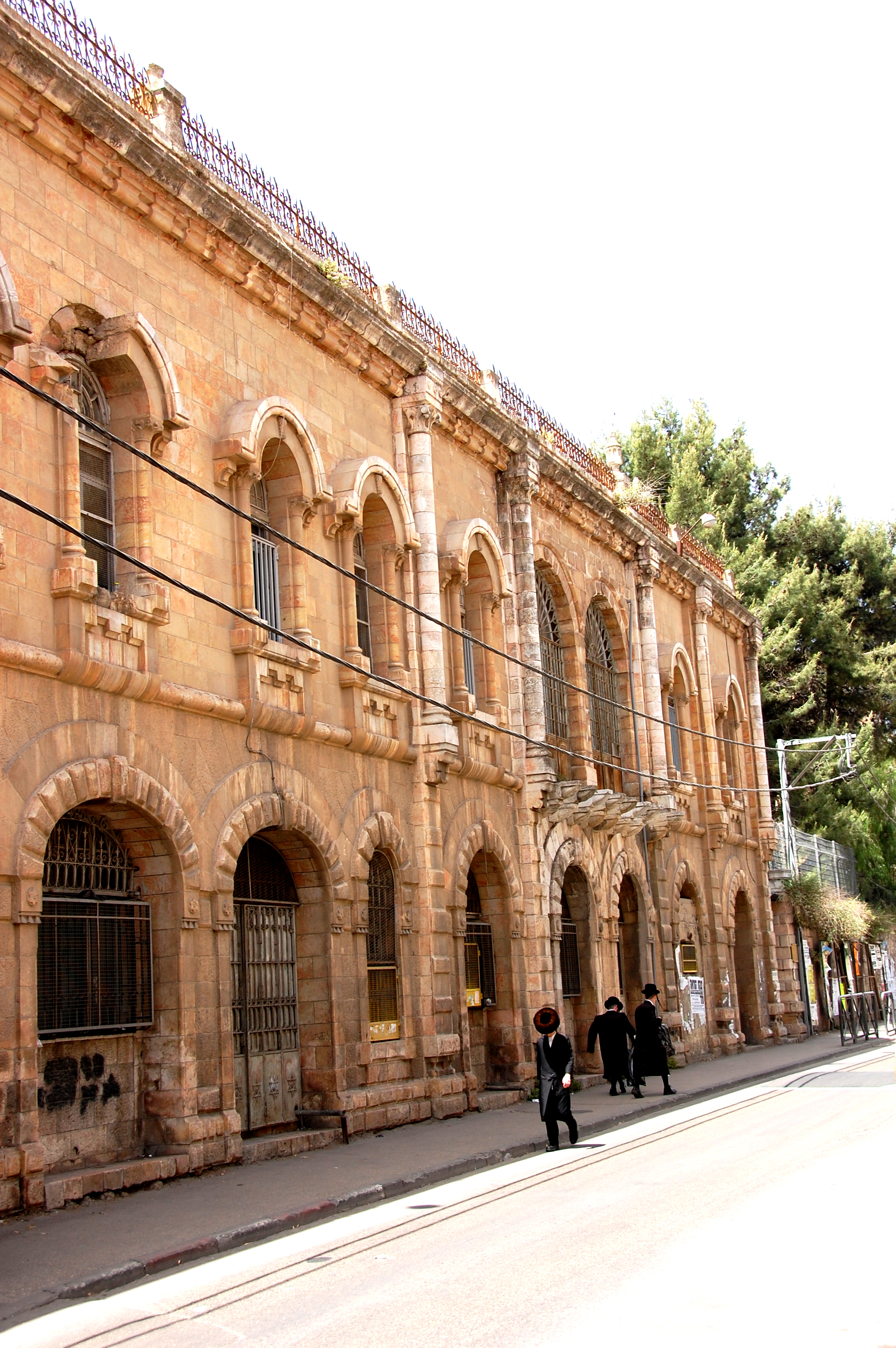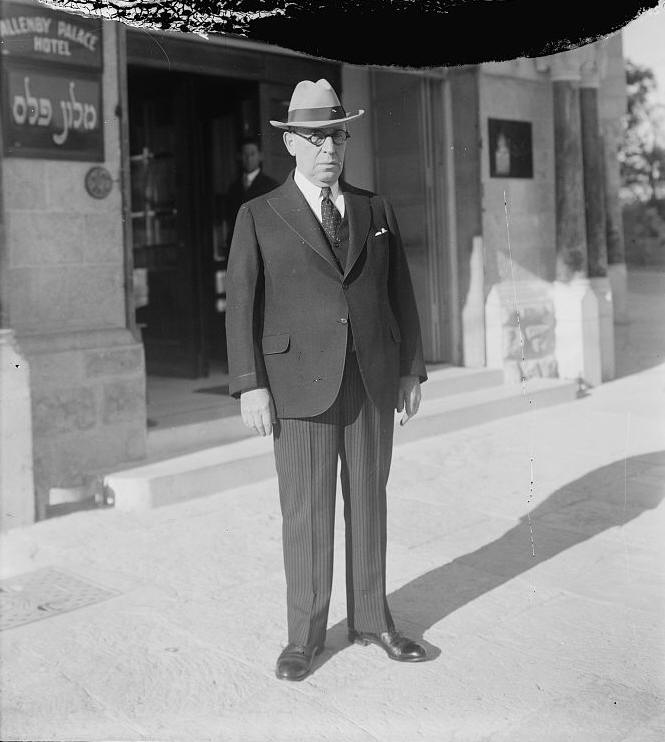|
Tel Arza
Tel Arza ( he, תל ארזה}) is a Hareidi neighborhood in northern Jerusalem. It is bordered by Ezrat Torah on the west, Shikun Chabad on the south, the Bukharim quarter on the east, and Sanhedria on the north. Tel Arza was established in 1931, as part of the expansion experienced in the Old Yishuv while recovering from the 1929 Palestine riots. Its name is taken from the Mishna,Tractate Yevamos Yevamot ( he, יבמות, "Brother's Widow", also pronounced Yevamos, or Yavmus) is a tractate of the Talmud that deals with, among other concepts, the laws of Yibbum (, loosely translated in English as levirate marriage), and, briefly, with conve ... 16 where it is described as a place where Jews were murdered. References {{coord, 31, 47, 42, N, 35, 12, 55, E, display=title Neighbourhoods of Jerusalem ... [...More Info...] [...Related Items...] OR: [Wikipedia] [Google] [Baidu] |
Hareidi
Haredi Judaism ( he, ', ; also spelled ''Charedi'' in English; plural ''Haredim'' or ''Charedim'') consists of groups within Orthodox Judaism that are characterized by their strict adherence to ''halakha'' (Jewish law) and traditions, in opposition to modern values and practices. Its members are usually referred to as ultra-Orthodox in English; however, the term "ultra-Orthodox" is considered pejorative by many of its adherents, who prefer terms like strictly Orthodox or Haredi. Haredi Jews regard themselves as the most religiously authentic group of Jews, although other Jewish religious movements, movements of Judaism disagree. Some scholars have suggested that Haredi Judaism is a reaction to societal changes, including Jewish emancipation, political emancipation, the ''Haskalah'' movement derived from the Age of Enlightenment, Enlightenment, Jewish assimilation, acculturation, Jewish secularism, secularization, religious reform in all its forms from mild to extreme, the rise ... [...More Info...] [...Related Items...] OR: [Wikipedia] [Google] [Baidu] |
Jerusalem
Jerusalem (; he, יְרוּשָׁלַיִם ; ar, القُدس ) (combining the Biblical and common usage Arabic names); grc, Ἱερουσαλήμ/Ἰεροσόλυμα, Hierousalḗm/Hierosóluma; hy, Երուսաղեմ, Erusałēm. is a city in Western Asia. Situated on a plateau in the Judaean Mountains between the Mediterranean Sea, Mediterranean and the Dead Sea, it is one of the List of oldest continuously inhabited cities, oldest cities in the world and is considered to be a holy city for the three major Abrahamic religions: Judaism, Christianity, and Islam. Both Israelis and Palestinians claim Jerusalem as their Capital city, capital, as Israel maintains its primary governmental institutions there and the State of Palestine ultimately foresees it as its seat of power. Because of this dispute, Status of Jerusalem, neither claim is widely recognized internationally. Throughout History of Jerusalem, its long history, Jerusalem has been destroyed at least twice, Sie ... [...More Info...] [...Related Items...] OR: [Wikipedia] [Google] [Baidu] |
Ezrat Torah
Ezrat Torah ( he, עזרת תורה}, in Ashkenazi Hebrew pronunciation: Ezras Torah) is a Haredi neighborhood in northern Jerusalem. It is bordered by Kiryat Sanz on the west, Golda Meir Blvd. on the north and east, and Shikun Chabad and Tel Arza on the south. History Founded around 1970, Ezrat Torah is named for the Ezras Torah Fund, a Jewish American charitable organization. Rabbinic presence Rabbi Yechiel Michel Stern, the author of 84 published Torah works who is considered an expert on the ''halakhot'' of the Four Species, has served as the Rav of Ezrat Torah since the 1970s. The Kapishnitzer Rebbe, Rabbi Yitzchak Meir Palintenstein, brought his Hasidut here in 1975. Other rabbis who live here include: *Rabbi Shmuel Rabinovitch, Rabbi of the Western Wall and the Holy Sites of IsraelIsraguide 2006, p. 194 *Rabbi Avraham Garbuz, author of the sefer ''Minchas Avraham'' on Kodashim file:Pidyon HaBen P6020102.JPG, 150px, Pidyon haben Kodashim ( he, קדשים, "Holy Thing ... [...More Info...] [...Related Items...] OR: [Wikipedia] [Google] [Baidu] |
Bukharim Quarter
The Bukharan Quarter ( he, שכונת הבוכרים, ''Shkhunat HaBukharim''), also HaBukharim Quarter or Bukharim Quarter, is a neighborhood in the center of Jerusalem, Israel. The neighborhood was established by Bukharan Jews of the Old Yishuv. The neighborhood also anchored communities from modern-day Afghanistan and the Iranian city of Meshad. It belonged to the early Jewish neighborhoods built outside the Old City of Jerusalem as part of a process which began in the 1850s. Today most of the residents are Haredi Jews. The quarter borders Tel Arza on the west, the Shmuel HaNavi neighborhood on the north, Arzei HaBira on the east, and Geula on the south. History The first immigrants of Bukharan Jews from Russian Turkestan (Central Asia) settled in Jerusalem in the 1870s and 1880s. In 1890, seven members of the Bukharan Jewish community formed the Hovevei Zion Association of the Jewish communities of Bukhara, Samarkand and Tashkent. In 1891, the association bought land ... [...More Info...] [...Related Items...] OR: [Wikipedia] [Google] [Baidu] |
Sanhedria
Sanhedria ( he, סנהדריה) is a neighborhood in northern Jerusalem. It lies east of Golda Meir Street, adjacent to Ramat Eshkol, Shmuel HaNavi (neighborhood), Shmuel HaNavi, Maalot Dafna and the Sanhedria Cemetery. History Sanhedria is named after the Tombs of the Sanhedrin, an elaborate underground complex of Rock-cut tombs in Israel, rock-cut tombs constructed in the 1st century and thought to be the burial place of the members of the Sanhedrin. Until 1967, Sanhedria was a frontier neighborhood adjacent to the Jordanian border and dominated by privately owned Jewish agricultural plots. After the Six Days War, construction of new housing led to an influx of newcomers from the religious community who were attracted by the location, within walking distance of the Old City and Western Wall (2 km). Many institutions were built in the neighborhood.Shlomit Flint, Itzhak Benenson and Nurit AlfasiBetween Friends and Strangers: Micro-Segregation in a Haredi Neighborhood in ... [...More Info...] [...Related Items...] OR: [Wikipedia] [Google] [Baidu] |
Old Yishuv
The Old Yishuv ( he, היישוב הישן, ''haYishuv haYashan'') were the Jewish communities of the southern Syrian provinces in the Ottoman period, up to the onset of Zionist aliyah and the consolidation of the New Yishuv by the end of World War I. As opposed to the later Zionist aliyah and the New Yishuv, which began with the First Aliyah (of 1882) and was more based on a socialist and/or secular ideology emphasizing labor and self-sufficiency, many Jews of the Old Yishuv, whose members had continuously resided in or had come to the Southern Levant in the earlier centuries, were largely religious Jews, who depended on external donations (halukka) for financial support. The Old Yishuv developed after a period of severe decline in Jewish communities of the Southern Levant during the early Middle Ages, and was composed of three clusters. The oldest group consisted of the Ladino-speaking Sephardic Jewish communities who settled in Ottoman Palestine in the late Mamluk and early ... [...More Info...] [...Related Items...] OR: [Wikipedia] [Google] [Baidu] |
1929 Palestine Riots
The 1929 Palestine riots, Buraq Uprising ( ar, ثورة البراق, ) or the Events of 1929 ( he, מאורעות תרפ"ט, , ''lit.'' Events of 5689 Anno Mundi), was a series of demonstrations and riots in late August 1929 in which a longstanding dispute between Muslims and Jews over access to the Western Wall in Jerusalem escalated into violence. The riots took the form, for the most part, of attacks by Arabs on Jews accompanied by destruction of Jewish property. During the week of riots, from 23 to 29 August, 133 Jews were killed by Arabs, and 339 Jews were injured, most of whom were unarmed. There were 116 Arabs killed and at least 232 wounded, mostly by the Mandate police suppressing the riots. Around 20 Arabs were killed by Jewish attackers and indiscriminate British gunfire. After the riots, 174 Arabs and 109 Jews were charged with murder or attempted murder; around 40% of Arabs and 3% of Jews were subsequently convicted. During the riots, 17 Jewish communities were e ... [...More Info...] [...Related Items...] OR: [Wikipedia] [Google] [Baidu] |
Mishna
The Mishnah or the Mishna (; he, מִשְׁנָה, "study by repetition", from the verb ''shanah'' , or "to study and review", also "secondary") is the first major written collection of the Jewish oral traditions which is known as the Oral Torah. It is also the first major work of rabbinic literature. The Mishnah was redacted by Judah ha-Nasi probably in Beit Shearim or Sepphoris at the beginning of the 3rd century CE in a time when, according to the Talmud, the persecution of the Jews and the passage of time raised the possibility that the details of the oral traditions of the Pharisees from the Second Temple period (516 BCE – 70 CE) would be forgotten. Most of the Mishnah is written in Mishnaic Hebrew, but some parts are in Aramaic. The Mishnah consists of six orders (', singular ' ), each containing 7–12 tractates (', singular ' ; lit. "web"), 63 in total, and further subdivided into chapters and paragraphs. The word ''Mishnah'' can also indicate a single paragraph of ... [...More Info...] [...Related Items...] OR: [Wikipedia] [Google] [Baidu] |
Yevamos
Yevamot ( he, יבמות, "Brother's Widow", also pronounced Yevamos, or Yavmus) is a tractate of the Talmud that deals with, among other concepts, the laws of Yibbum (, loosely translated in English as levirate marriage), and, briefly, with conversion to Judaism. This tractate is the first in the order of Nashim (, "Women"). Yevamot, along with Eruvin and Niddah, is considered one of the three most difficult tractates in the Babylonian Talmud. A Hebrew mnemonic for the three is (''ani'', meaning "poverty").Jacob Emden, ''Mitpachat Sefarim'' 4:174 Contents ''Yibbum'' is the Torah law () by which the brother of a man who died without children is allowed and expected to marry the widow. This law only applies to paternal brothers, i.e., brothers by the same father; whether they have the same mother or different mothers is irrelevant. The deceased's widow(s) is forbidden to marry anyone else while waiting for one of the brothers to marry her, or release to her by performing a cer ... [...More Info...] [...Related Items...] OR: [Wikipedia] [Google] [Baidu] |






